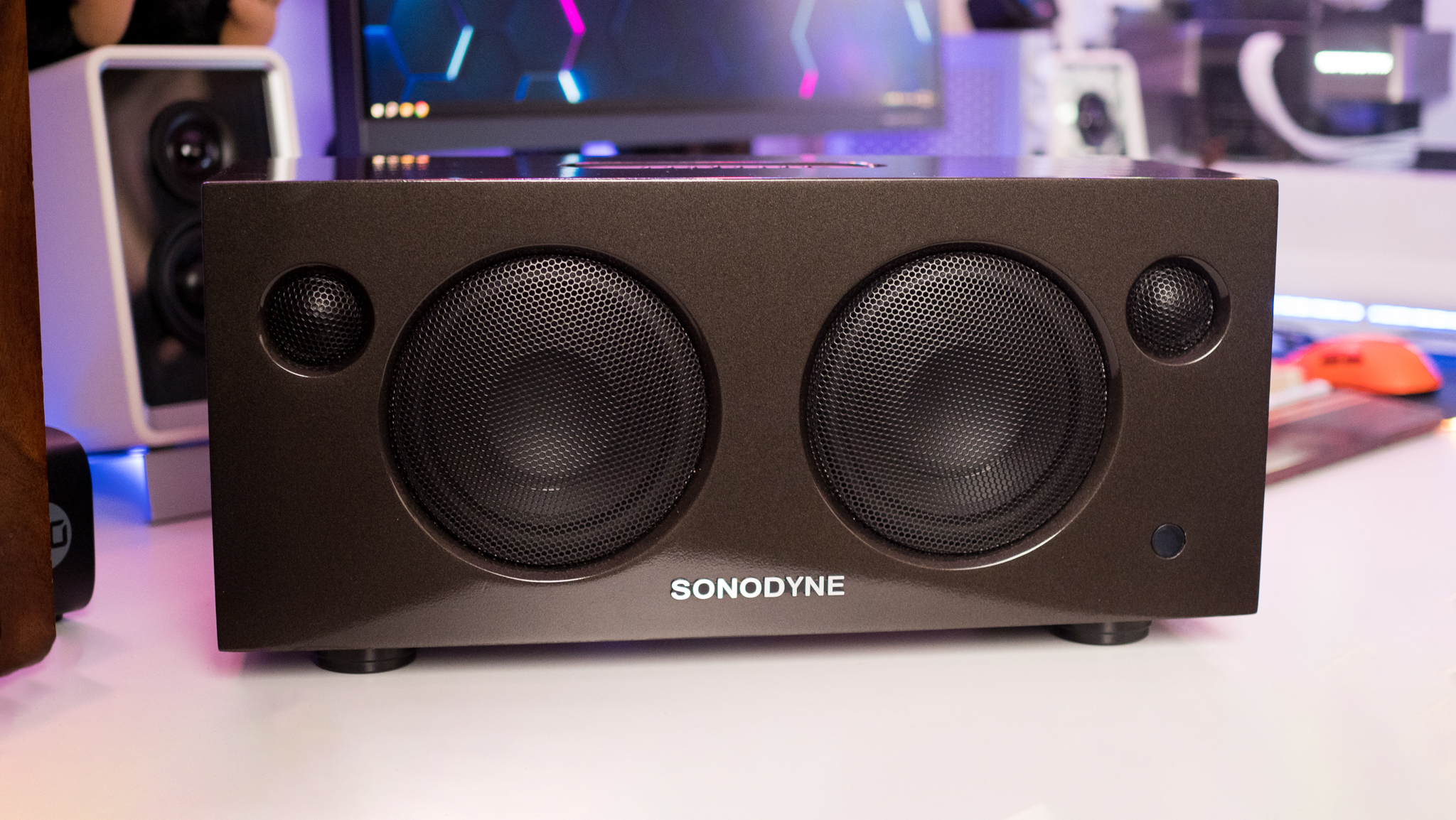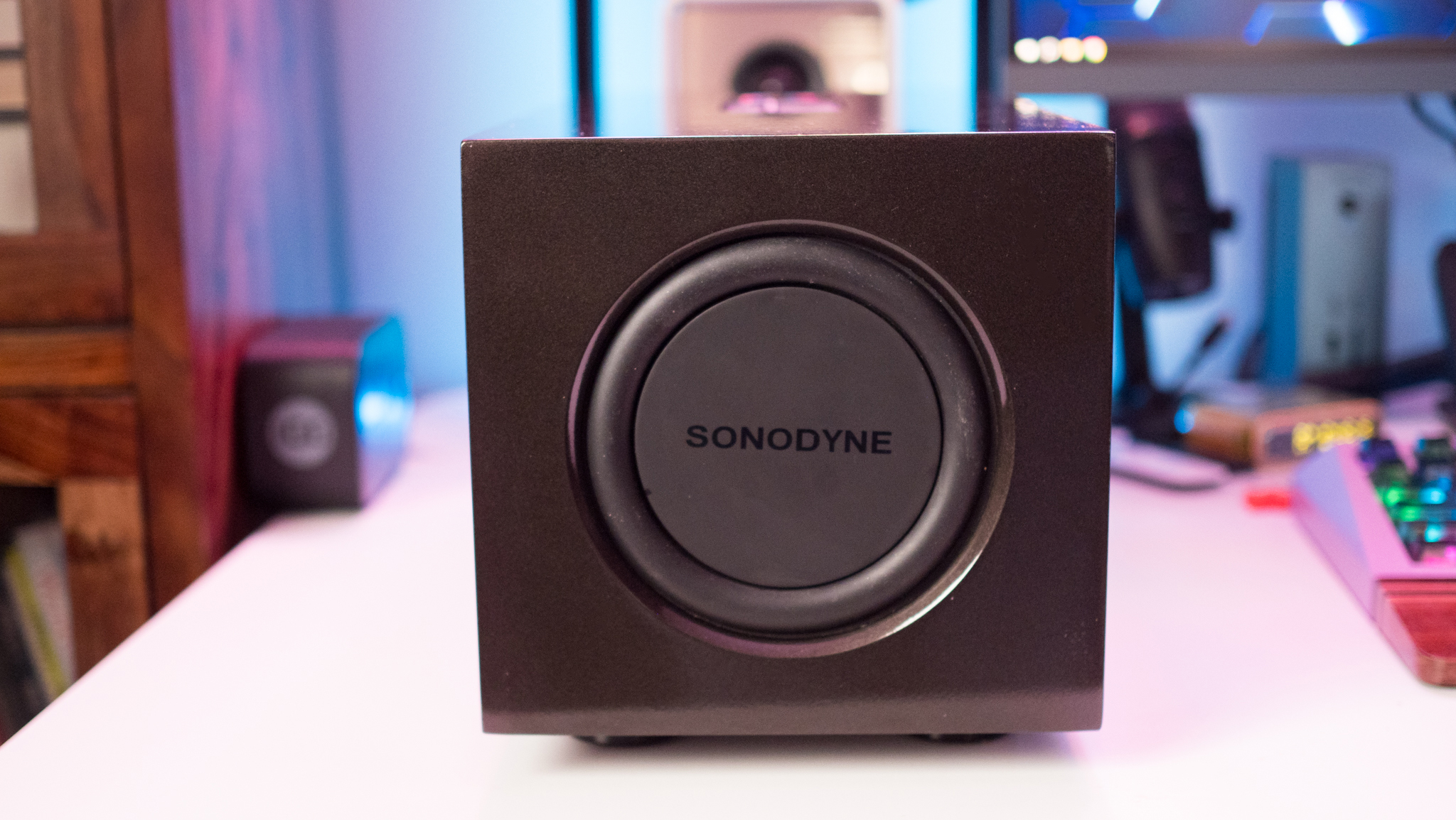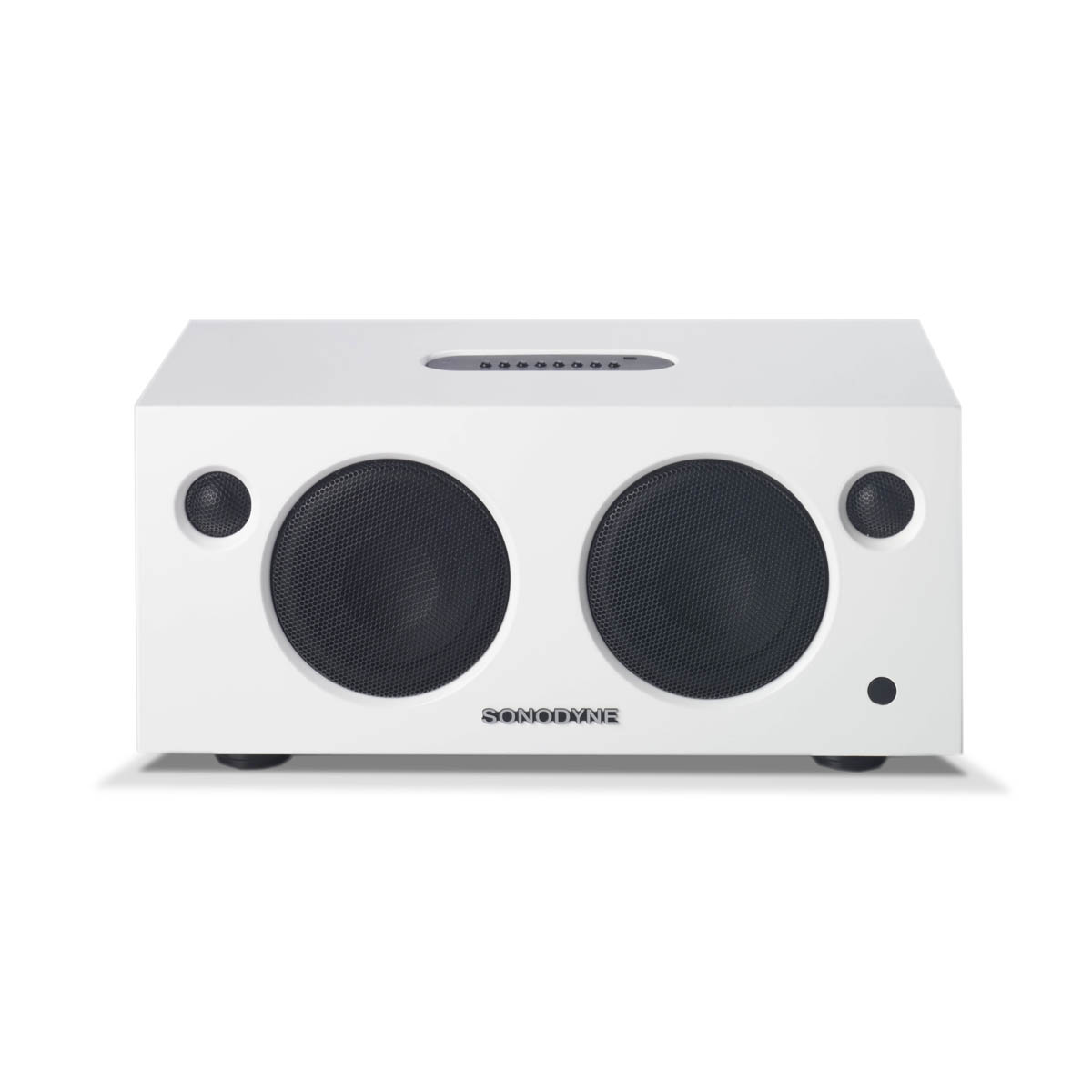Android Central Verdict
The Malhar is a domineering Bluetooth speaker with a bold design. It has reliable Bluetooth connectivity and 3.5mm in alongside optical and USB, and there's even a bundled remote. The biggest reason to pick up the speaker is the sound quality; Sonodyne did a fantastic job tuning the audio, and the Malhar holds up just as well at classical music as it does with heavy metal. If you want a powerful Bluetooth speaker to fill a medium-sized room, this is the way to go.
Pros
- +
Powerful 180W sound
- +
Terrific audio quality and tuning
- +
Decent connectivity with 3.5mm and optical
- +
Sturdy design
- +
Good bundled remote
Cons
- -
No way to adjust EQ
- -
Buttons are a little fiddly
- -
Limited to India
Why you can trust Android Central
Sonodyne is an Indian audio manufacturer that has been around for over 50 years, and while it usually caters to enthusiasts, its latest products are aimed at a wider audience. The Malhar joins Alaap, Antara, and Bandish, and it is the most powerful wireless speaker Sonodyne has to offer.
I used dozens of Bluetooth speakers over the course of the last decade, including portable options like the Tribit StormBox 2 and the oversized StormBox Blast, or bigger units that are meant to be plugged in, like Trettitre's unique TreSound 1 or the Marshall Stanmore. In fact, I used the Stanmore continuously for nearly a decade now, and it has served me very well.

The Malhar is in the same category as the Stanmore in that it needs to be connected to a wall outlet. That's understandable when you consider that the speaker produces 180W of sound, and it is even larger than the Stanmore. The Malhar debuted at ₹37,500 ($445) back in 2022, and it is now available for ₹31,999 ($380) on Amazon India — which is less than what you'd shell out for the Stanmore III.

The speaker has a distinctive design, and the chassis is made out of MDF — giving it rigidity — and finished in a glossy coat. I'm not a big fan of glossy designs in general, but the Malhar looks good in its own right, and the build quality is exquisite. There are no rounded edges, but the blocky design works in the speaker's favor, and the sizing gives it a domineering presence.

You'll find the power and volume buttons at the top of the unit, and you can switch between 3.5mm in, USB, optical, or Bluetooth modes with relative ease. The buttons are on the smaller side, and fiddly to use. Thankfully, the Malhar has an IR sensor located up front, and you get a remote bundled in the package. This is how I controlled the speaker in the month I used it.
The remote lets you control music playback, change connectivity modes, adjust volume, and it has a mute button. Rounding out the connectivity, the optical, 3.5mm in, and USB ports are located at the back, and there's a secondary USB-A port that delivers 5W of power. Coming in at 8kg (17.6lb), the Malhar is considerably heavier than the Stanmore III as well (5.4kg (11.9lb)). This isn't a speaker you can easily carry around; it's instead to be placed in one location.

Sonodyne sells the Malhar in white, black, red, and natural wooden variants, and I got the black version of the unit. If anything, the black version does a disservice to the Malhar, making it look a little dull; if you're interested in the speaker, you should get it in white or red. Given the glossy finish, the speaker picks up a lot of dust, and it is easily visible on the black variant.
Get the latest news from Android Central, your trusted companion in the world of Android

There's a metal grille covering the woofer and tweeter units, and it adds a bit of contrast to the design — if you're getting the white model. Like all other Sonodyne products, the Malhar is designed and manufactured in India. The Sonodyne logo is highlighted at the front, and the way the logo is written is reminiscent of certain dental brand, and it's amusing.

Coming to the sound, the Malhar has two 5-inch woofers, two 1-inch silk-dome tweeters, and dual 5-inch passive radiators located on the sides. The speaker uses a Class D amp, and it goes up to 180W. I connected the Malhar to my Pixel 9 Pro XL and iPhone 16 Pro Max, and I didn't see any problems with Bluetooth connectivity — it maintained a rock-solid signal.
Interestingly, the Bluetooth pairing sound should be immediately familiar if you've taken a train in India; Sonodyne installed the PA systems in several Indian railway stations, and the Malhar uses the same jingle when you connect a phone to the unit.

The sound quality is nothing short of phenomenal; the Malhar produces a reverberating bass with plenty of vigor, but it is controlled, and doesn't bleed into the mid-range. The mids are natural and clear-sounding, and vocals shine through. The treble has excellent range, and this is where the Malhar stands out against its rivals.
Sonodyne clearly knows what it's doing when it comes to tuning its speakers; the Malhar is just as capable at handling orchestral ensembles as it is at heavy metal — and everything in between. I used the speaker for dozens of hours, alternating between RATM, Ghost, Nightwish, Batushka, Thylacine, Daft Punk, Com Truise, and Miles Davis. The Malhar had no trouble with any genre, and it has a definite edge over the Stanmore in this regard.

The only omission (as it were) is that you don't get the option to adjust the EQ. This isn't strictly necessary as Sonodyne did a masterful job with the tuning of the Malhar, but there were instances where I wanted to crank up the bass a bit, and that isn't doable. I constantly adjust the dials on the Stanmore to tailor the sound to my preferences, but there isn't a way to do the same here.

That said, there's a vibrancy to the sound that you just don't get with other Bluetooth speakers, and it is addictive. Ultimately, the Malhar is one of the best — if not the best overall — Bluetooth speaker I have used, and the fact that it doesn't cost more than the Stanmore makes it an instant recommendation.

The Malhar looks great, is built to last, and it sounds better than any other Bluetooth speaker I used up to this point. If you're in India and want a home speaker, you should just pick this up.

Harish Jonnalagadda is Android Central's Senior Editor overseeing mobile coverage. In his current role, he leads the site's coverage of Chinese phone brands, networking products, and AV gear. He has been testing phones for over a decade, and has extensive experience in mobile hardware and the global semiconductor industry. Contact him on Twitter at @chunkynerd.
You must confirm your public display name before commenting
Please logout and then login again, you will then be prompted to enter your display name.


